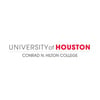UH Hilton College Historian, Archivist Opens Hilton Vault To ‘Madmen’ Writers
Professor Consults for Hilton Storyline in Emmy-winning TV Series


If you want a biography of hotelier Conrad Hilton, you can check out a library book or do a Google search and find an acceptable timeline of his life. But if you want to know about his accent, where his cowboy hat is or the advertising budgets for his hotels, then you go see Professor Mark Young.
Young is a historian, archivist and director of the Massad Family Library Research Center and Hospitality Industry Archives at the University of Houston Conrad N. Hilton College of Hotel and Restaurant Management. And he’s the man who counseled writers for the hit series “MadMen” as they worked on several episodes in which Conrad Hilton appears.
“They wanted to know about hotels he owned at that time. They asked about his book (“Be My Guest,” 1957). They asked me about Hilton’s personality,” Young said. “I like the show because, as a historian, I see that they try to be as historically accurate as they can be. From the clothing to the drinks.”
Currently under renovation, the Hilton College’s Hospitality Industry Archives are a resource to students, educators, industry professionals and media. Built in 1989 through a grant from the Hilton Foundation, its first and largest archival collection came from the office of Conrad N. Hilton. It holds historical documents, photos and other items of Conrad Hilton from the 1880s through the 1970s. The Hilton Hotel information is current through today. Young says two writers kept in touch with him from February to July of this year, calling and emailing questions and requesting images.
“They asked about a woman named ‘Olive Wakeman,’ who was his administrative assistant for many years. One episode includes a character with the same name, which I thought was a nice touch. The advertisements they featured in that episode weren’t originals, but they stayed very true to the style and feel of a luxurious Hilton hotel.”
The storyline details the relationship between Hilton and ad man Don Draper in 1963 as Hilton contemplates changing advertising agencies—a historically accurate event. Young says in 1964 Hilton left his longtime agency, Needham and Grohmann, in favor of McCann Erickson.
Young doesn’t mind some of the embellishments. In the series, Hilton asks advice for a magazine ad that featured an animated mouse. While the incident allowed the fictitious agency to join forces with Hilton, Young says there never was a campaign featuring a mouse, though one internal publication of Chicago’s Hilton Towers did introduce an animated bird.
Young gives the show’s writers credit for caring about an accurate depiction of Hilton, from his impeccable suits to his cowboy hat.
“It was his trademark and they got it right,” Young said. “We have it here at the college in a piece of luggage especially made for it.”
For more information on the UH Conrad N. Hilton College of Hotel and Restaurant Management, visit .
For more information on the college’s Hospitality Industry Archives, visit .
About the University of Houston | The University of Houston, Texas’ premier metropolitan research and teaching institution, is home to more than 40 research centers and institutes and sponsors more than 300 partnerships with corporate, civic and governmental entities. UH, the most diverse research university in the country, stands at the forefront of education, research and service with 37,000 students.
Marisa Ramirez
713/743-8152
University of Houston
